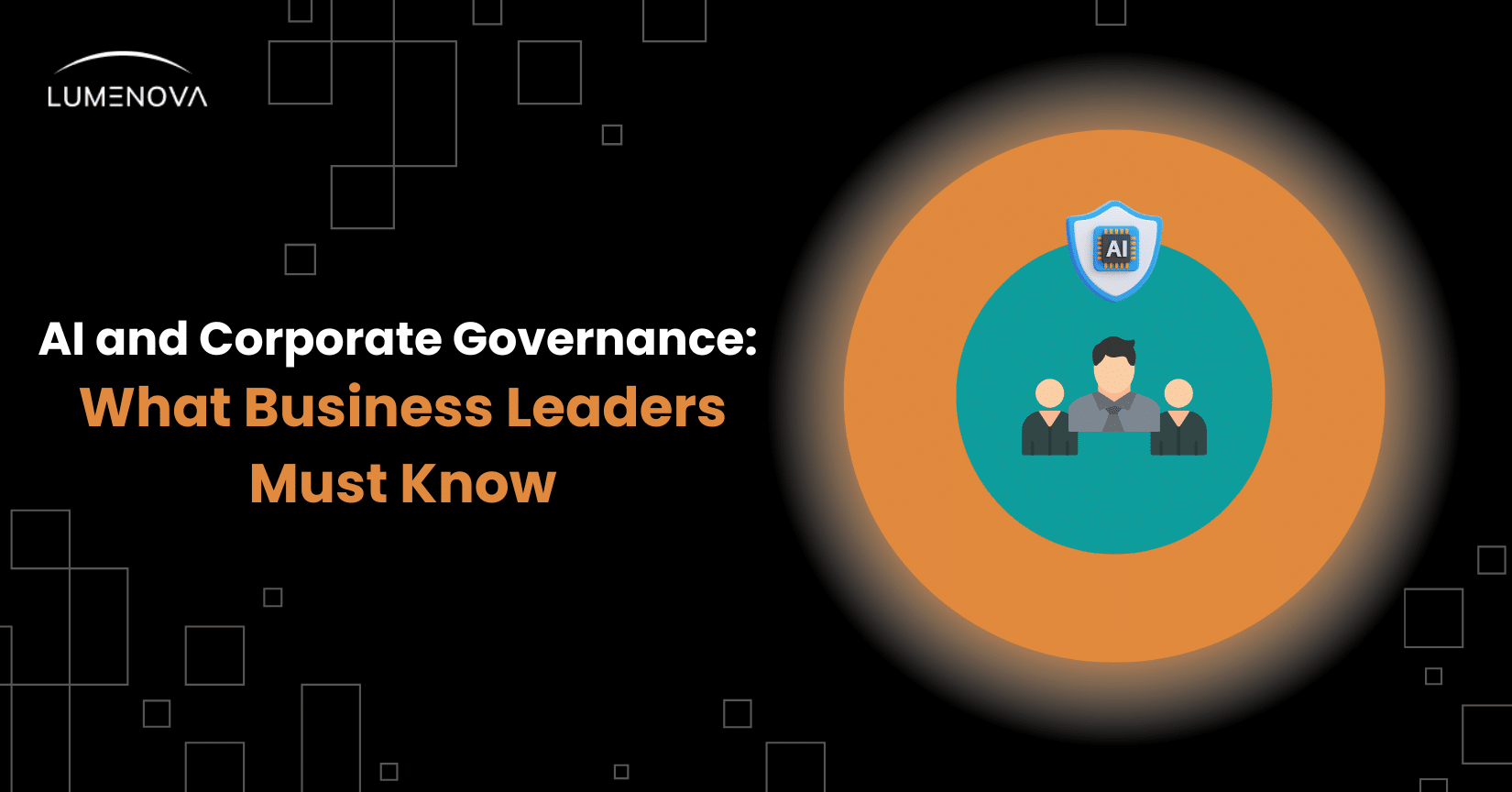October 23, 2025
AI and Corporate Governance: 3 Critical Things Business Leaders Need to Know

Contents
AI can accelerate growth faster than any technology before it, but without the right governance, it can just as quickly accelerate risk. From automating decisions to optimizing operations, AI is reshaping how enterprises function. Yet sustainable adoption depends on shared accountability, clear oversight, and AI governance tools that turn technical complexity into strategic clarity.
AI Risks That Demand Leadership Attention
The risks are not theoretical, they’re business-critical. Every leader must understand where governance gaps can emerge:
Bias and Discrimination
Even well-designed AI systems can absorb and amplify hidden biases in data, leading to unfair or discriminatory outcomes that damage reputation and stakeholder trust.
Lack of Explainability and Transparency
When leadership cannot clearly trace how AI models make decisions, accountability and compliance become major challenges.
Misalignment with Business Goals
AI projects detached from strategic priorities risk wasted investment and missed value.
Data Privacy and Regulatory Compliance
Managing sensitive data now means navigating evolving frameworks like GDPR and the EU AI Act, where failure can mean fines and lasting brand damage.
Model Drift and Unintended Consequences
AI models degrade and behave unpredictably over time if not continuously monitored, increasing operational risk and eroding trust in automation.
These challenges echo themes from recent discussions on the importance of The Competitive Edge of Continuous AI Model Evaluation, which emphasize constant vigilance against risks like model drift and bias.
Leadership’s Role in AI Governance
AI governance isn’t a single-department responsibility, it’s a shared leadership mandate.
Each executive plays a distinct role in ensuring AI remains ethical, compliant, and strategically aligned:
- CIO/CTO: Leads the technical stewardship by enforcing rigorous model development, thorough testing, and ongoing monitoring to detect issues early.
- CRO/Compliance Officer: Integrates comprehensive risk assessments into every stage of the AI lifecycle to uncover and mitigate potential risks.
- CEO/COO: Drives the organizational culture around responsible AI, ensuring AI initiatives align with overarching strategic goals and ethical standards.
- General Counsel (GC): Provides expertise to navigate complex regulatory landscapes, ensuring that AI systems comply with existing and emerging legal requirements.
- CFO: Oversees AI budgeting and investments, balancing the expected return on investment against associated risks and costs.
This cross-functional model mirrors best practices detailed in Lumenova AI’s 6 Steps to Embed Responsible AI Guidelines, where governance becomes a shared foundation for innovation, not a constraint.
Building a Sustainable AI Governance Framework
The most resilient AI programs are built on four principles: clarity, transparency, accountability, and privacy. Global frameworks such as NIST AI RMF, OECD AI Principles, and Singapore’s AIGA offer structured approaches to these goals, but implementation requires more than policy.
Practical steps for leaders include:
- Defining governance objectives aligned with business priorities
- Creating clear policies and guardrails for AI deployment
- Assigning role ownership across departments
- Delivering leadership and employee training
- Establishing continuous model monitoring and independent audits
When done right, these measures ensure AI systems remain ethical, compliant, and value-driven throughout their lifecycle. For a deeper dive, see Lumenova AI’s 7 Important Components of an Effective AI Governance Framework article.
Turning Oversight into Opportunity
Governance doesn’t have to slow innovation, it can be the catalyst that turns complexity into strategic advantage. Modern AI governance platforms now enable leaders to automate guardrails, enforce compliance, and facilitate cross-functional collaboration, transforming oversight into proactive control.
Lumenova AI’s recent coverage on Using AI Governance Platforms to Automate Gen AI Guardrails, explores how organizations can achieve this shift in practice.
Lead with Confidence in the Age of AI
AI success is no longer about speed of adoption, it’s about clarity of control.
With the right governance in place, leadership teams can unlock innovation while maintaining trust, compliance, and visibility across every AI decision.
Book a personalized consultation or demo with Lumenova AI to see how our platform helps enterprises:
- Implement clear oversight across departments
- Monitor and audit AI models in real time
- Mitigate regulatory and ethical risks
- Turn governance into a driver of strategic value
Lead responsibly. Govern confidently. Unlock AI’s full potential with Lumenova AI.